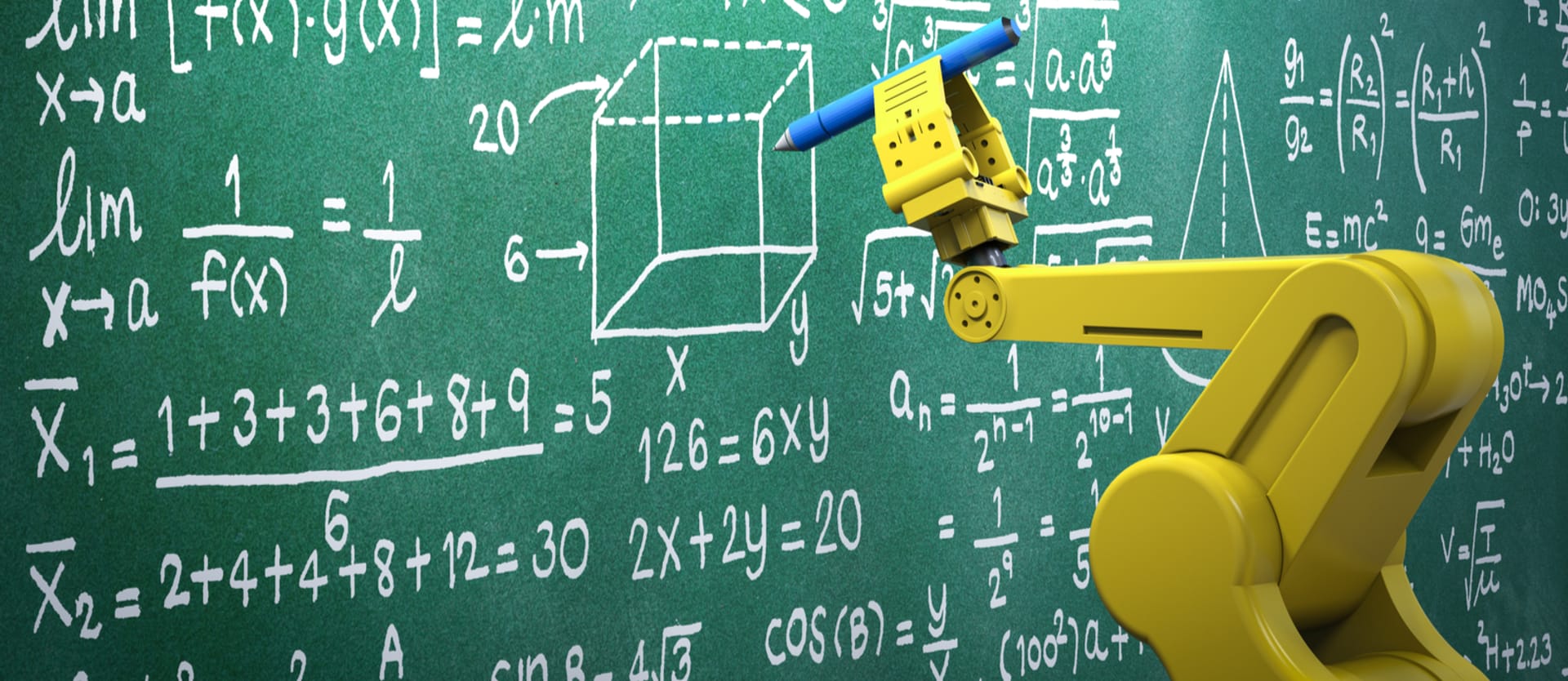In a world fueled by disruptive technologies, no wonder businesses heavily rely on machine learning. For example, Netflix takes advantage of ML algorithms to personalize and recommend movies for clients, saving the tech giant billions. Google, in turn, uses the Google Neural Machine Translation (GNMT) system, powered by ML, reducing error rates by up to 60 percent.
But no technology can work efficiently without input from human experts. This article will focus on the role of a machine learning engineer, their skills and responsibilities, and how they contribute to an AI project’s success.
But no technology can work efficiently without input from human experts. This article will focus on the role of a machine learning engineer, their skills and responsibilities, and how they contribute to an AI project’s success.


ML engineer, explained
The role of a machine learning engineer in the data science team
A machine learning engineer (MLE, for short), as the very name suggests, is someone who combines software engineering expertise and knowledge of machine learning. The focus here is on engineering, not on building ML algorithms. The primary goal of this specialist is to deploy ML models to production and automate the process of making sense of data — as far as it’s possible.MLEs are usually a part of a data science team that includes data engineers, data architects, data and business analysts, and data scientists. Watch our video to better understand their roles.
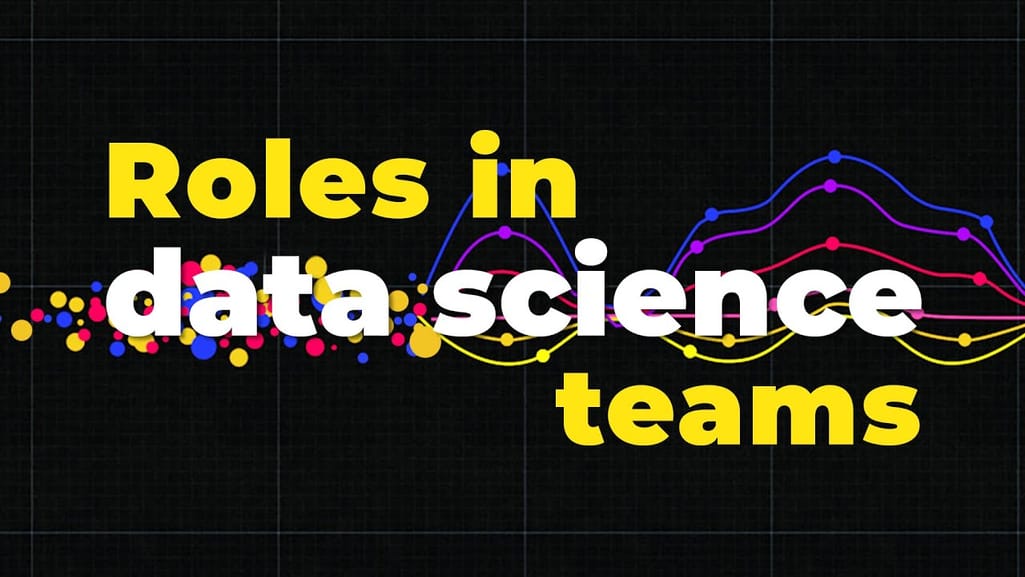

Who does what on a data science team.
Machine learning engineers are relatively new to data-driven companies. So, it is no surprise that they are often confused with data scientists and data engineers. While their functions sometimes overlap, these experts are responsible for different parts of a machine learning project.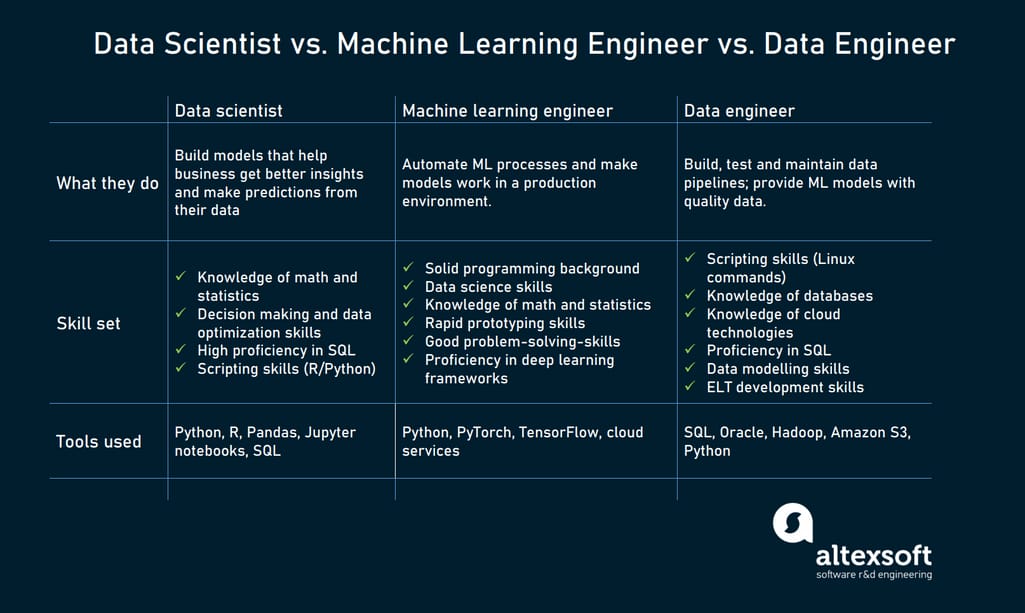
How a machine learning engineer differs from a data scientist and a data engineer.
Machine learning engineer vs. data scientist
A data scientist is more of a creative researcher who carries out experiments with data and models. This position requires a solid grasp of statistics, analytics, and reporting methods rather than proficiency in programming languages. Their task is to prepare data and build ML models to get business insights.

Data preparation 101
A machine learning engineer is more of a tech specialist who designs, maintains, and upgrades AI systems upon which models operate. In other words, they take algorithms created by data scientists and make them work in a production environment or organization workflow at scale. MLEs ensure that the models will reach your phones, computers, and other tech equipment.Machine learning engineer vs. data engineer
While MLEs concentrate on delivering ready-to-use ML products, data engineers are in charge of everything that happens with data before it is fed to algorithms. They build, test, and maintain data pipelines — or infrastructures for moving data from its source to where it is consumed by models.To sum up, we can use the following analogy: Data engineers are gold miners excavating valuable information, data scientists convert this gold to jewelry, and MLEs deliver the jewelry to the target audience and improve the product according to customer requirements. Now, let’s look at what an MLE does in more detail.
Responsibilities of a machine learning engineer
The responsibilities of an ML engineer will largely depend on the project, company, and industry. We have gone through lots of job boards to compile the main tasks the person in this role is expected to complete.Participating in the development of machine learning apps that meet business needs. MLEs work closely with both front-end and back-end engineers to design AI-fueled applications. They also communicate with product managers to understand business objectives and how to achieve them using machine learning.
Building and deploying machine learning systems. Mainly, machine learning engineers take care of delivering ML models to end users. To automate and manage ML processes, they develop a scalable system known as a machine learning pipeline. To support model implementation and execution within a targeted environment, MLEs often need to write custom code.
In large, data-driven enterprises, MLEs are involved in MLOps, or automation of the entire model life cycle in production. This covers stages from initial model training to monitoring to retraining against new datasets. Read more about it in our dedicated article MLOps: Methods and Tools of DevOps for Machine Learning.
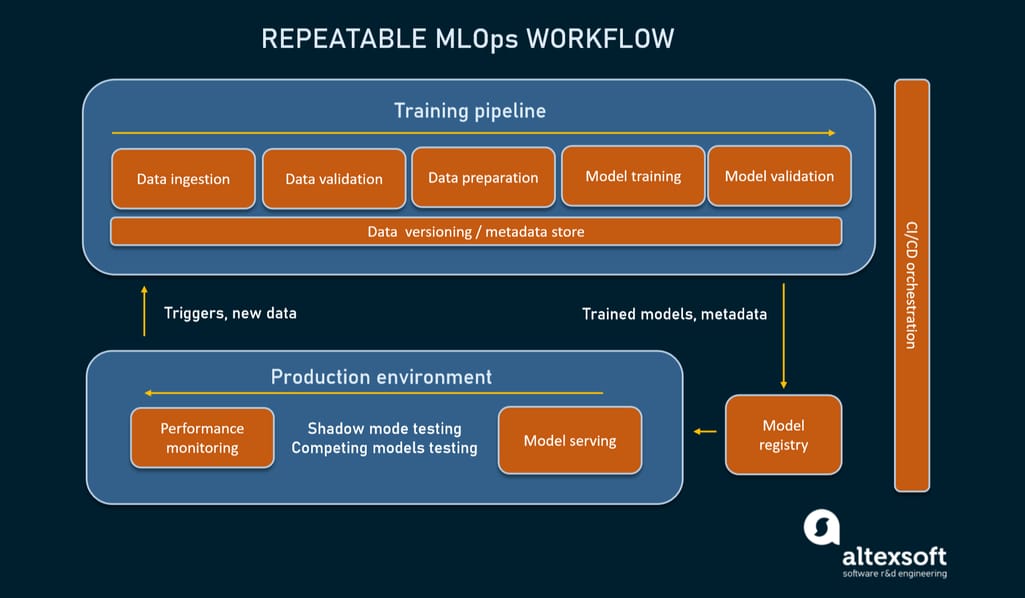
Key components of an MLOps cycle.
Analyzing and improving ML algorithms. This task can take up to 50 percent of MLE work time. To accomplish it, the machine learning engineer must- clearly understand business goals;
- supervise data acquisition and collaborate with a data engineer to verify data quality;
- participate in developing, training, and choosing models that will solve business problems;
- write tests to evaluate the robustness of the models;
- monitor models in production using metrics;
- develop validation strategies; and
- retrain models to obtain better results.
Creating documentation on machine learning processes. Ideally, MLEs should also accurately document machine learning processes. This type of technical documentation helps better organize the ML development flow.
Making business recommendations. MLEs should use their findings and observations to recommend how to optimize and improve the production of ML solutions. Typically, engineers convert quantitative information into charts and graphs with data visualization tools to make it conceivable for non-techs.
Now, the question is: What skills and competencies are necessary to do an MLE job?
The skill set of machine learning engineers
If you want to hire a machine learning engineer, there are certain skills and qualities to look for in the first place. Even though their responsibilities differ from company to company, here are some of the main characteristics of a successful ML engineer.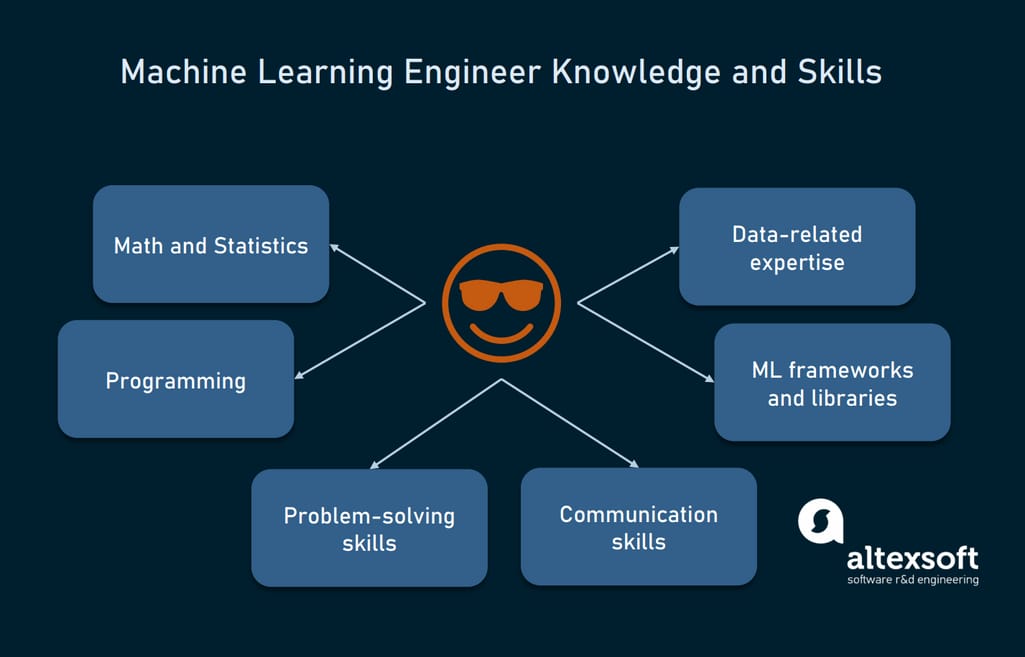
The basic skill set of a machine learning engineer.
Solid foundation in Math and Statistics. At the bare minimum, MLEs must be comfortable with- basic linear algebra as data for ML tasks is presented in the form of matrices and vectors;
- calculus to understand how machine learning models work; and
- introductory statistics and probability. The former deals with analyzing past events, while the latter is used to calculate the likelihood of future events.
Data-related expertise. Data is at the core of machine learning. So, a good machine learning engineer is well versed in data structures, data modeling, and database management systems. They are also able to present their conclusions with visualization tools such as Tableau, Dash, or Power BI.
Proficiency with ML frameworks and libraries. This includes such powerful platforms as Keras, PyTorch, and TensorFlow. Though, as we mentioned before, MLEs typically don’t build models on their own, they still must have a strong understanding of advanced ML technologies like deep learning and neural networks.
Good problem-solving skills. Machine learning engineers have to find different approaches to fix bugs and errors in machine learning models. Failures should not frustrate them but bring about curiosity to understand why the model doesn’t work properly.
Good communication skills. Such skills are an important part of almost every job requirement. For example, machine learning engineers will need to explain ML concepts to people with little to no expertise in the field. Besides, they constantly collaborate and share ideas with other experts — software and data engineers, data scientists, and more.
When and why should you hire a machine learning engineer?
Here are some of the reasons why you need to hire a machine learning engineer:Scaling your data science team. In small teams, data scientists may cover for the lack of a machine learning engineer. However, as the project grows bigger and more complex, you will need a separate specialist who focuses on testing and retraining multiple models and pushing them into production.
Dealing with a constantly changing business environment. Many businesses must proactively react to changing factors — like patterns of customer behavior or prices. Tracking model performance and retraining it once fresher data is available is key to success. This falls under the MLE range of responsibilities.
Frequent retraining and redeployment of multiple models. In tech-driven companies, numerous models need to be refined frequently — based on real-time data feeds. You can’t possibly accomplish this without introducing automation. And that’s where an MLE comes in.
How to become a machine learning engineer
Obviously, the prerequisite of becoming an MLE is a degree in computer science, software development, engineering, applied mathematics, or related domain. Graduates should also acquire some expertise in programming and software architecture before merging engineering with machine learning.
Examples of career paths for machine learning engineers.
The following courses help fill ML knowledge gaps — providing that you already have a solid tech background.Machine learning on AWS. The course by Amazon teaches students how to build AI apps with services provided by AWS and how to deploy and maintain such solutions. It also includes building ML pipelines to address real-life business problems.
Machine Learning and Artificial Intelligence on Google Cloud. The certificate offered by Google covers both data scientist and machine learning engineer skills. It introduces Google's ML, AI, and Big Data products — namely, BigQuery, Cloud SQL, and AI platform. Students get acquainted with the end-to-end ML life cycle, from creating a strategy to building models with Keras and TensorFlow to deploying them in production.
AI engineer on Microsoft Azure. The Azure AI Engineer Associate certification proves the ability to build computer vision, NLP, conversational, and other AI products on top of Azure services. It is assumed that applicants have expertise in C#, Python, or JavaScript and can work with REST APIs.
IBM Advanced Data Science. The IBM Advanced Data Science certificate confirms a profound understanding of data processing, exploration, and visualization along with machine learning and deep learning. This involves studying math foundations behind ML algorithms. Among other things, graduates will be able to make architectural decisions, analyze model performance, and improve their accuracy and scalability.
Speaking of IT professionals, many of them can be retrained quickly for MLE roles if such the need arises. The likely candidates are software engineers, software architects, and cloud architects — especially those who have already worked on AI projects. So, instead of hiring a new person, companies can find potential machine learning engineers among their existing specialists who already have a deep understanding of the internal business process and goals.
